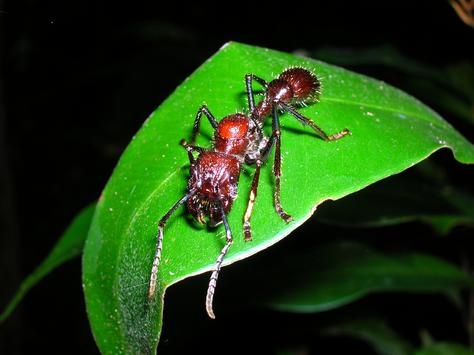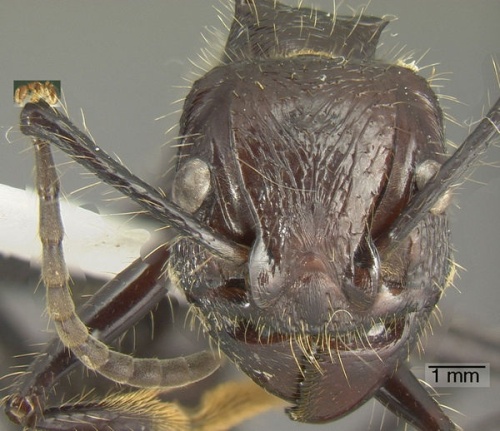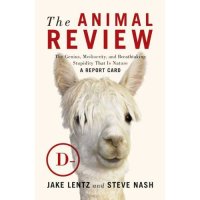Kingdom Animalia is rife with misleading common names. For instance, the electric eel is not an eel but a fish (albeit a high-voltage one). Meanwhile, jellyfish are not fish, nor are they are made of jelly or jam or marmalade or even preserve – sadly, ‘jellyfish’ are mostly tentacles and painful nematocyst stingers, making the majority of species a very poor companion to English muffins. Up on dry land, the lies persist: badgers rarely nag or impose upon the other woodland creatures; the tarantula hawk is neither a predatory bird with eight talons nor a giant flying spider (it’s a wasp); and the Great Dane is, in reality, just pretty good and is actually of German extraction (the accent tends to creep back after it’s had a few too many cocktails).

I’m sorry, my napkin ist gefallen. Now vat vere you sayink?
All of this is frustrating, confusing, and enough to make us all want to start smoking again. But what to do? Well all of us could make a collective decision to employ Linnaeus’ clunky Genus–species binomial nomenclature system in everyday conversation. And sure, that would eliminate the problem of misleading animal names. But it almost doubles the number of names to remember. What’s more, the movement would certainly lose steam the first time someone at the beach spotted a large dorsal fin tearing through the water and yelled, ‘Carcharodon carcharias!’ – and then watched in erudite horror as children continued to splash around and their parents avoided eye contact with what they assumed to be a crazy Italian tourist.
Then, of course, the killing would begin.

I strongly support use of the binomial naming system.
So like it or not – for good reason or not – we’re stuck with the oft-perplexing common names.
The bullet ant (Paraponera clavata, lit. ‘Anaphylactic shock and awe’) of Central and South America falls into a very specific category of common names that are at first misleading (‘Hmmm, it doesn’t look like a bullet…I wonder if maybe it’s fast like a bullet?’), but which then makes immediate sense when you realize you’ve been absentmindedly standing on its nest this whole entire time (‘Oh…it hurts like a bullet…okay okay…I think I get it now’).

Sorry for the confusion. I wanted to be called The Wicked Sting Pain Machine.
The bullet ant is so named because the long, retractable syringe on its abdomen injects an incredibly painful neurotoxic peptide, poneratoxin, and it is poneratoxin that makes the bullet ant the stuff of legend among entomologists and myrmecologists.1 Just how painful is a bullet ant’s poneratoxin? Well, in simple layman’s terms, it hurts like [EXPLETIVE DELETED]. More scientifically stated, it tops the Schmidt Sting Pain Index, coming in at 4.0+ on a scale of 1 to 4, which means that the pain of a bullet ant sting is literally off the charts, and makes one wonder if the Schmidt Sting Pain Index could use some revising.2 In its present form, the Schmidt Sting Pain Index is the brainchild of Justin Schmidt, an entomologist who subjected himself to the bites and stings of horrible insects in his very favorite taxonomic order, Hymenoptera (mainly wasps, bees and ants), in an effort to classify the pain numerically and get his picture in Pointless Weekly.3 And though it found overnight success among entomologists, the insect pain scale never found a foothold in popular culture, and the great Muhammad Ali is never described as a pugilist who could ‘float like a butterfly and sting like a 2.54 on the Schmidt Sting Pain Index.’
Schmidt characterized the sting of a single bullet ant as ‘pure, intense, brilliant pain’ and suggested (from self-imposed experience) that it was about 30 times more painful than the sting of a common wasp. And so, the bullet ant holds the title of both world’s most hurtful insect and the world’s most hurtful invertebrate, while Schmidt himself remains ranked as the coolest entomologist in the cafeteria.

‘Did I tell you that I let a bumblebee sting the inside of my nose? Because I did.’
It turns out, however, that long before Schmidt and his pain experiments, the Satere-Mawe tribesman of Brazil were well aware of the kind of pain available from the bullet ants. Sure, they lack the science to isolate the poneratoxin and identify its precise effect on nervous tissue, but they do have the good old common sense to collect the ants, drug them with a natural anesthetic and weave them by the hundreds into thatched gloves for their young aspiring warriors to wear for ten minutes (a process repeated up to twenty times over the course of their initiation) rendering their hands into burning, throbbing useless masses of excruciating torture that lasts for hours and hours. The Satere-Mawe still perform this rite of passage to this day, leading the first Satere-Mawe warriors to witness a cowboy-themed Bar Mitzvah in the San Fernando Valley to wonder if their own rite of passage didn’t leave some room for improvement.
Aside from a mind-bending sting, bullet ants are huge (for an ant), with workers reaching up to one inch in length, making them the largest ant in the world. And opposite their abdominal stinger, these predatory/scavenging insects sport oversized mandibles that offer prey such as termites the choice of death by neurotoxic peptide or a giant pair of organic pliers. Indignant termites will often ridicule this proposition as an ‘either-or fallacy’ or a ‘false dilemma,’ pointing out that they also have the option to escape, though they rarely complete the thought.

Suffice it to say, the bullet ant has had little success with online personals.
Given the bullet ant’s small-animal-big-sting persona, Animal Review is willing to overlook its somewhat misleading common name (along with a stern admonition that it could be clearer; might we suggest a simple prefix like ‘Neurotoxic’ or ‘Excruciating’ – or both?). The fact is, the bullet ant carries the most painful sting of any insect – so painful that simply wearing a glove filled with hundreds of bullet ants twenty times is apparently enough to make you into a warrior (though more than a few Satere-Mawe initiates are said to realize that getting their hands stung by ants doesn’t seem to have a lot to do with winning wars, anyway, and instead opt for vocational school). The only real issue holding back Paraponera clavata is that, after all is said and done, it is still an ant, and nobody ever gets too excited about ants4.
GRADE: B+
1 Not to mention the occasional cosmetologist who sits down on a tree stump in a Nicaraguan forest to reapply her lipstick.
2 You first.
3 The Schmidt Sting Pain Index is not to be confused with the Schmidt Sting Pain Scale, which Justin Schmidt developed to classify the terrible progression of Gordon Sumner’s complete discography. Schmidt ranked the October 2006 release ‘Songs from the Labyrinth’ at 3.8, describing it as ‘hot, smoky, searing agony. Even for $6.99.’
4 Except myrmecologists.


The Wikipedia page for the guy that came up with the Schmidt Sting Pain Index references sadomasochism. Given how he came up with the index, that doesn’t seem all that surprising…
Your first example is a little of the mark. All eels are fish. However, you are correct in that the electric eel is not a true eel, it belongs to a different class. Sorry, I’m a science editor, I couldn’t resist.
I would marry animal review. Without a prenup.
Where was this when I was struggling in biology. Every high school teacher should read this. Students would sit up and lsiten.
bullet ants!
The Bullet Ant might be my favorite review yet. Take that, Mimic Octopus!
Definitely my favorite so far. This is one of my go-to sites for a good laugh. Thanks again.
Get in line, David.
poop…just poop
bullet ant ! Uoops its so scary experience
All of the above is true. A month ago, I received a Bullet Ant bite while hiking in Ecuador. The pain is unbelievable. Because I am allergic to most insect bites, I carry an Epi Pen in my backpack. Used it, as well as, benadryl and a powerful pain pill later in the day. (I am 80-years-old, but certainly did not have this experience on my Bucket List.)
Wikipedia does not mention sadomasochism. Read this: http://www.straightdope.com/columns/read/3052/did-the-creator-of-the-schmidt-sting-pain-index-volunteer-to-get-stung-by-everything-on-earth
Schmidt wasn’t a sadomasochist, he was just a researcher of insects and an opportunist. He recorded his information whenever he was accidentally stung.